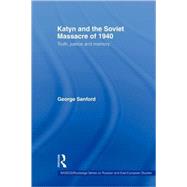- ISBN: 9780415338738 | 0415338735
- Cover: Hardcover
- Copyright: 10/21/2005
In spring 1940 the NKVD, Stalin security police, massacred nearly 15,000 Polish prisoners of war captured in September 1939 during the Nazi-Soviet war against Poland. Taken from camps at Kozelsk, Starobelsk and Ostashkov, they were shot and buried at Katyn. The massacre was uncovered and publicized by the Nazis during their spring 1943 advance into the USSR, along with similar atrocities in Kharkov and at Mednoe near Tver. Another 7,300 Poles were shot in Ukranian and Belarussian prisons at the same time, bringing the total death toll to around 22,000. This study is the first to use Soviet documentation released in the early 1990s to explain how the failure of NKVD interrogation and recruitment attempts along with acute Polish-Bolshevick rivalry lead the Stalinist leadership to decide on mass slaughter. In addition to an exploration of the rational of the Stalinist state, Katyn and the Soviet Massacre of 1940 gives an authoritative case study of the processes used by Stalin through a detailedaccounting of the mechanics of the transportation and execution of the victims. The truth about the massacre was suppressed both by the Soviet Union and by their post-war satellite regime in Poland. But the management of the issue by the American and British governments after 1943, examined in the second half of this book, also has major significance. The failure by the Western powers to question the Soviet cover-up stands as an embarrassing part of their wider policy of acceptance of Poland's takeover at the end of WWII. While the lingering effects of war continue to haunt Eastern Europe, this study is a vital contribution on the debate over how the memory of atrocities can be assuaged by justice for victims through truth-telling, apologies and reconciliation. Of interest to scholars and students of Eastern European and WWII history, this volume is a fascinating look into a dark chapter of mankind's bloodiest century.







